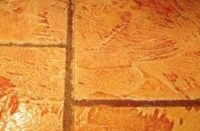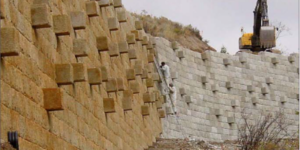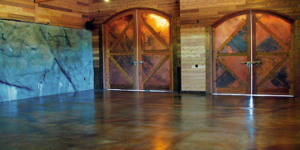
Delivering the best results possible is what many of us contractors strive for, but that is very hard if you do not know the many factors that can affect final stain appearance. I have seen many projects where contractors simply applied a stain to a project without any proper surface preparation or knowledge. This is not only a quick way for a contractor to be put out of business, but can also give stained concrete a bad reputation.
I have listed several factors that can play a role in stain variations. The following factors should be taken into consideration when choosing a stain color and be brought to the customer’s attention.
Cement color — Lighter-colored cements, especially white, will produce much brighter colors than dark gray floors. Since stains are translucent, the base color of cement will play a major role in final color.
Cement load and admixtures — The cement load and admixtures will play a part too. Acid stains react to the lime in cement, so more cement means more reaction. On the other hand, some admixtures reduce the free lime available in concrete, thus reducing the effect of the stain. By applying stain in a hidden area you can test its reaction.
Finishing techniques — Concrete can be so tightly troweled that the concrete is almost waterproof. Stains will produce the best effects on concrete with an open and porous surface. Burn marks from troweling is a sign the surface may be troweled too tightly.
There are products available to “open” the concrete before staining. They are of a mild acidic nature, so they should be used with caution so as to not completely etch the surface. One such product is DCI Hard Troweled Floor Preparation, from Direct Colors Inc. Janitorial supply stores also carry products for this purpose.
Porosity — The surface of very porous concrete will take much more of the stain to achieve a mottled look. If you apply too much stain you will get a much darker surface. Try diluting the stain further or wetting the surface prior to stain application to get the desired look.
Temperature — When staining outdoors in direct heat, it is important to dampen the slab prior to reactive stain placement or wait until a cooler part of the day to place stain. If the stain dries on the surface before it can penetrate into the surface it will not produce the desired effect.
Problem areas — Almost every older concrete slab I have worked on has stains, marks or other imperfections that will show up in the finished floor. Instead of trying to hide these from the client, I explain during the job that these are the same marks that we discussed previously and were listed in the contract as areas that could show.
From my experience the customer who walks the floor with you throughout the process is a happier client. When they feel that you take your work seriously and really want to provide the best floor, they understand you are not trying to hide things from them.















